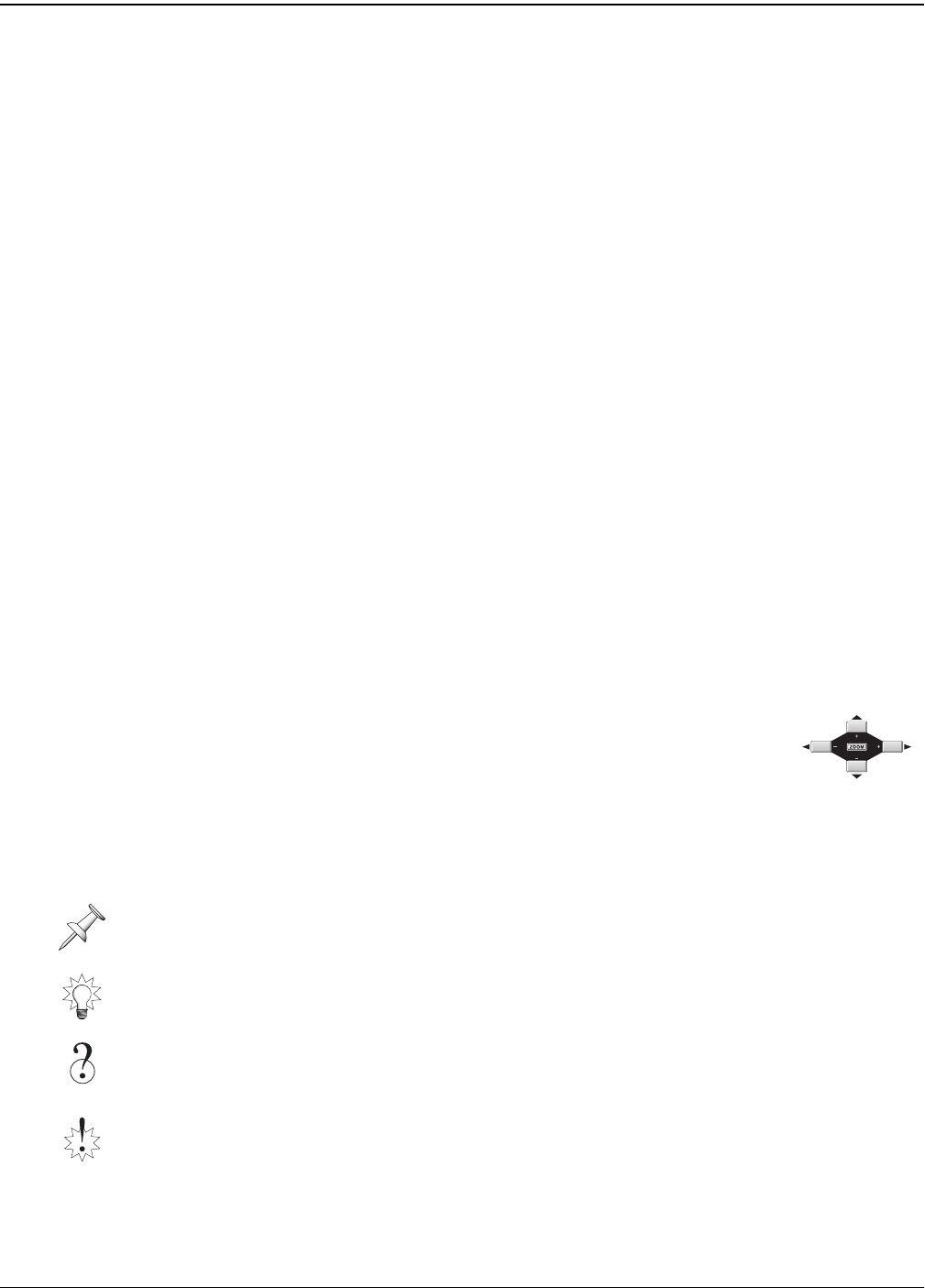
1—Welcome
28 www.rolandus.com Roland VS-2480 Owner’s Manual
To make it easy for you to find the manual’s numerous step-by-step procedures, we’ve
assembled a “Step-by-Step Instruction Finder” that starts on Page 20. There’s also a
standard Table of Contents at the front of the book and an Index at the back.
Additional information can be found in the “Supplemental Information” chapter
starting on Page 387.
In this manual, illustrations that show VS-2480 screens reflect their appearance at the
time the manual was written. As the VS-2480’s software is enhanced through operating
system upgrades, the appearance of the VS-2480’s screens may change.
Names
Throughout the
VS-2480 Owner’s Manual
, the names of buttons, knobs, faders, jacks—as
well as settings that appear in the display—are shown exactly as they look on the
VS-2480 itself. As a result, names printed on the VS-2480 are shown completely in
capital letters. For example, the button labeled “PROJECT” will appear in the manual
as the PROJECT button, or simply PROJECT, as in “Press PROJECT.” Settings on the
display are shown in the same lower- and upper -case letters they use onscreen.
A few buttons serve several purposes and have long names. In such cases, we’ll refer to
the button by the name that reflects its current use. For example, if we want to view CH
EDIT parameters, we’ll say to press the “desired CH EDIT button,” not the “desired CH
EDIT/SELECT/PHRASE SEQ STATUS/AUTOMIX STATUS” button. Some buttons
have two labels. If we need to refer to both, we’ll show the labels with a bullet between
them, as with the HOME•DISPLAY button.
The F 1-6 buttons beneath the display do different things at different times. We’ll show
an F button’s current function in parentheses after its name, as in “F1 (INPUT).”
The four arrow keys are a special case. Sometimes, we’ll collectively refer
to
,
,
and
as “cursor” buttons since they allow you to move, or
“cursor,” around in the VS-2480’s display.
Note, Tip, Glossary and Warning Icons
Throughout the
VS-2480 Owner’s Manual
, you find the symbols shown below in the left-
hand margins. Here’s what these symbols mean.
Notes
provide additional information about the topic described in the main text.
Tips
offer interesting ways to use the feature under discussion. They’ll also let you know
why you should care about what’s being said.
This symbol will be of special interest to beginners, because the word—or words—to its
right can be found in the glossary that starts on Page 415.
Make sure you pay attention whenever you see the
Warning
symbol. Warnings provide
important information that will help you avoid damage to your recordings, VS-2480,
other equipment or even yourself.
VS2480OMUS.book 28 ページ 2006年2月7日 火曜日 午後4時16分


















